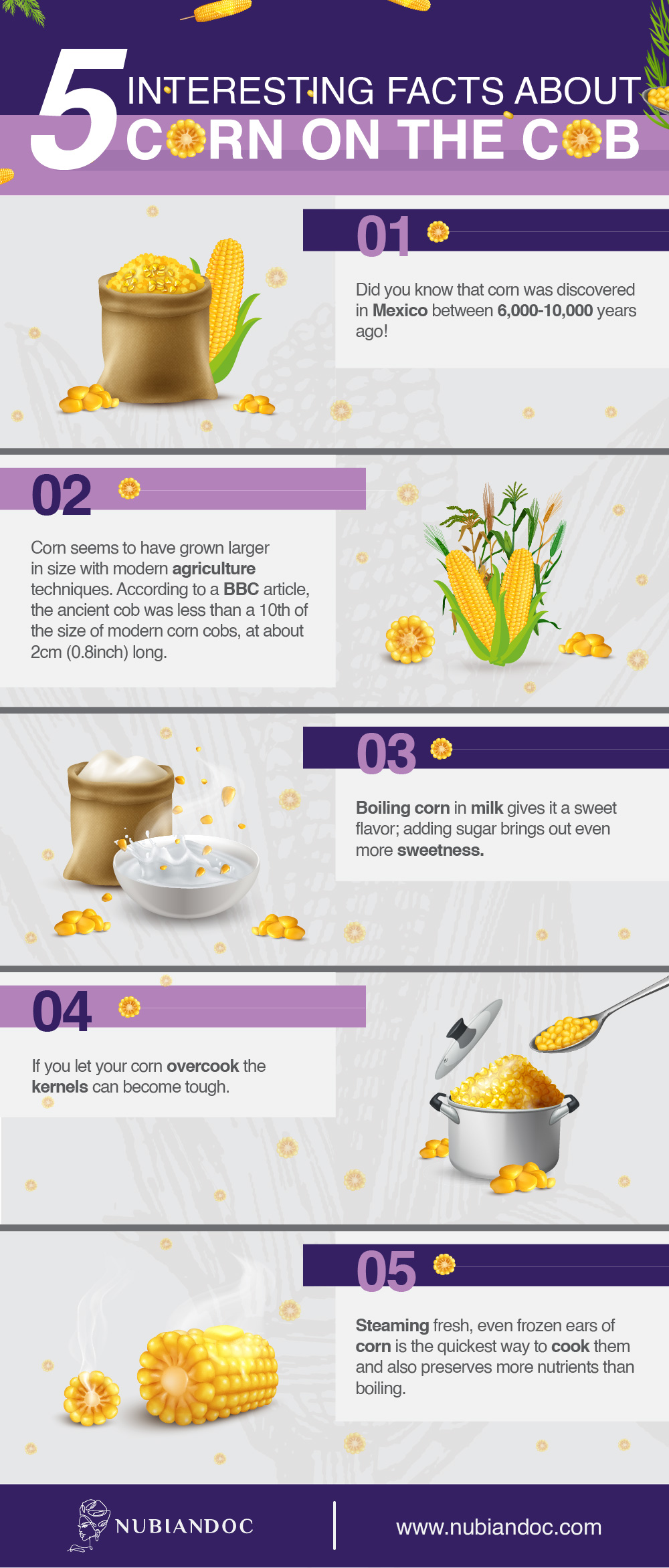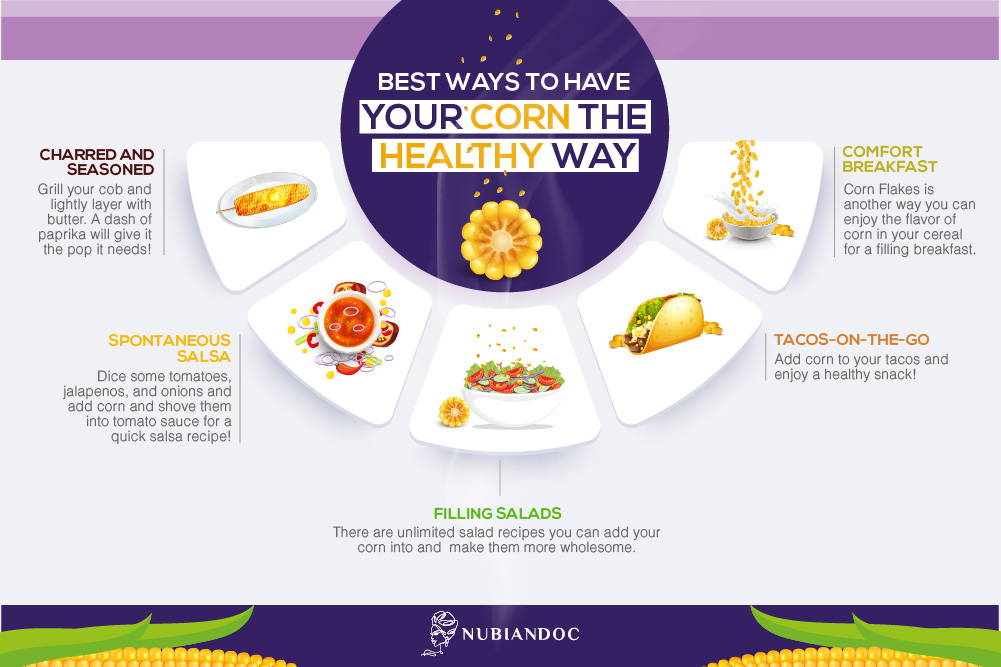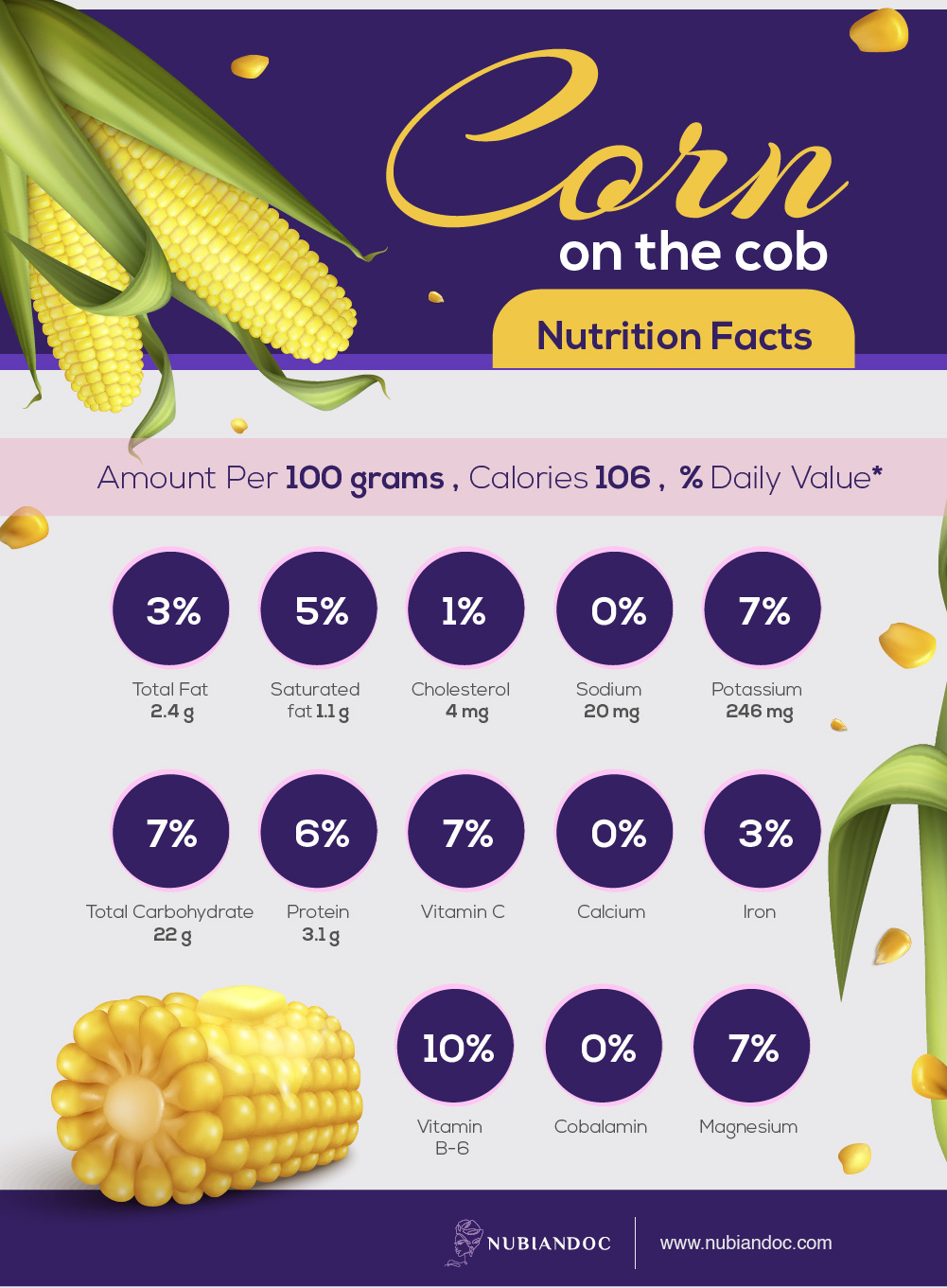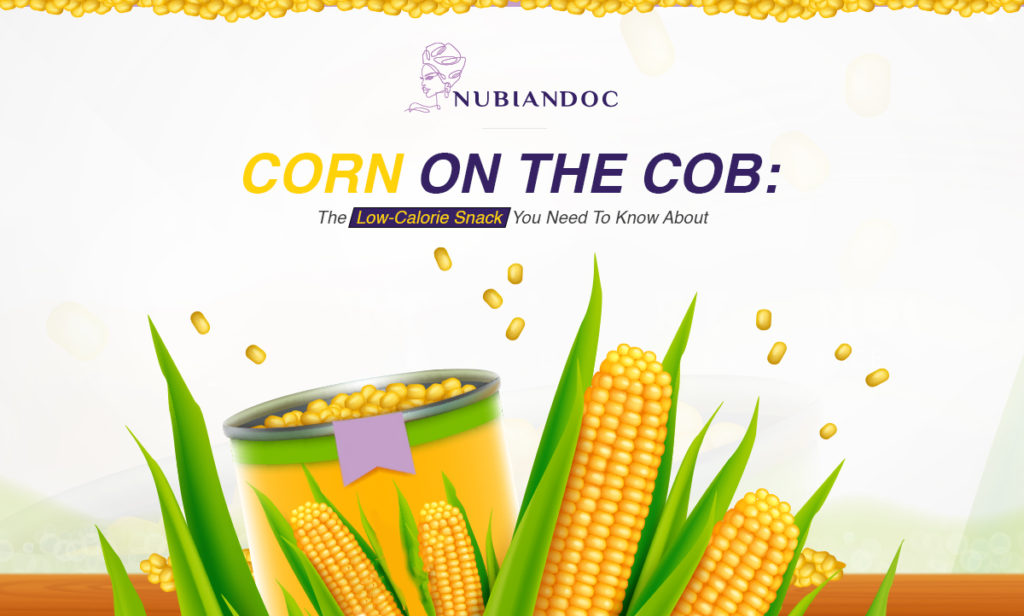Corn on the Cob: The Low-Calorie Snack
Corn on the Cob | Adding Corn to Your Diet | Healthier & Tastier Recipe | Nutritional Value | Healthy Weight Loss Alternative | Bottom Line
One of the universally loved foods is corn. Corn is consumed globally in different forms and styles but there is hardly any cuisine that does not benefit from this amazing vegetable. Usually, corn products are believed to be high in calories like cornbread or cornflakes. Because of that, some people avoid this super healthy vegetable altogether. But here we are reviving the tradition by bringing to you the same old recipe with a breakdown of calorie-content and nutrients, so you reintroduce corn to your diet without having to worry about counting the calories. Let’s rediscover corn on the cob!
Corn on the cob is a popular and traditional soul food dish. The ear of freshly picked maize is called corn on the cob. The natural flavor of corn is enhanced mainly by using salt and butter. It can be prepared in a variety of ways and is usually eaten while still warm. Corn can be microwaved, boiled, and even barbecued. It’s pretty simple to prepare and tastes great. Two for one! It is also one of the healthiest sides you can have with your meals.
In this article, we hope to share a recipe that is healthier and tastier than usual – also, the nutritional value of the dish and its various benefits to your health.
Where does the name come from?
In US, the words corn and maize are both used for the plant that has edible kernels. Corn on the cob is the term used for a cooked ear of corn (steamed, boiled, or grilled) without the green husks attached.
A Guilt-free Way of Adding Corn to Your Diet
The cooking process and various recipes for corn on the cob have gone through generations of development to become what they are today. For example;
This side dish is eaten while still warm because corn starts losing its sweetness as soon as it is harvested. It can lose up to 25% of sweetness in one day.
Sweet corn is a popular choice to be eaten as corn on the cob. This variety of corn does not convert its sugar into starch as quickly as other varieties and has higher sugar content. So, the sweetness aspect is still maintained after cooking it.
Maybe now you’re more appreciative of this sweet old soul food. If not, don’t worry, we’re confident the following recipe is going to change your mind.
Summary: Corn has enormous health benefits and can taste equally well when used in different recipes. Corn on the cob is one of the most popular ways you can add this rich-in-nutrients vegetable to your diet without compromising on taste!

Delicious but low-calorie Corn on Cob Simmered in Butter Bath
Keep reading because it is going to be a short and sweet recipe that you can easily recreate in your kitchen. Offered as a side dish, it should not take too much of your time to prep and serve. Corn on the cob is one food that delivers on that.
Ingredients for corn on the cob
Serves 4
- 6 ears of corn (the husks and silks should be removed)
- 240 or 1 cup milk
- 1 stick of butter
- Water
Cooking utensils required
- A large pot
- Any type of tongs to scoop the ears of corn out of the water once they are cooked
Instructions to prepare corn on the cob
- Fill the large pot with water up to the ¾ mark
- Bring the water to a boil
- Add milk and the stick of butter (You can also add salt and sugar depending on your preference.)
- Put the ears of corn in (You can cut them in half if they don’t fit into your pot)
- Turn down the heat and let the mixture simmer in the pot for 5 to 8 minutes
- Remove the corn from the mixture
- Serve and enjoy!
Be sure not to get hard corn. Sometimes, the corn kernels lose too much moisture, or the sugars have converted to starch.
To avoid this, make sure you don’t overcook the kernels. Also, try to buy the freshest produce that has lively green husks and plump seeds.
There are many ways to prepare Corn on Cob. You can boil it, microwave it, steam it, grill it, and more. While everyone has a different preference, simmering it in a butter bath is the most popular and delicious one.
Summary: Enjoy this low-calorie corn on the cob at home and enjoy with family without being worried about the calorie because each corn on the cob contains less than 100 calories.
Make your Corn on Cob: Healthier and Tastier
We’ve told you how to make a tasty batch of Corn on the Cob. Now, here is how you can change the recipe to suit your needs.

Want to make it a healthier recipe?
Try using olive oil instead of butter. Olive oil instead of butter is an excellent choice if you know which eating healthy rules you should follow and which to avoid. This is because olive oil has considerably less saturated fat. Saturated fat can increase your body’s cholesterol levels and lead to a more significant risk of heart disease and stroke.
Olive oil instead of butter may seem like the healthier choice, but is it the tastier one?
It can be. All you have to do is tweak the recipe a bit.
Boil a few ears of corn. Then, in a bowl, put together olive oil, parmesan cheese. Squeeze a lemon on top and season with some salt. Mix it together, and now you have a delicious healthy topping to layer over your corn on the cob.
Like this, there are more ways you can add flavor to your corn to make you enjoy it even more.
You’ve added salt to butter before, now it’s time to add a little bit more. Try adding citrus zest or spices like paprika.
You want something creamier with a subtle taste? Roast some garlic and use it with your butter.
Add a Mexican twist to your corn. Drizzle your corn with mayonnaise, some cheese, and chili powder.
You are welcome to make your unique changes to the recipe. After all, you know what you like best. Still, we thought we should help. So here are some of the things you can add to the recipe that has proven to pair nicely with corn and its distinct flavor.
Other items that you can add to your corn on the cob side:
- Avocado
- Bell peppers
- Blueberries
- Carrots
- Cauliflower
- Jalapenos
Herbs & Spices:
Dairy Products:
- Butter
- Buttermilk
- Coconut milk
- Cheddar cheese
- Goat cheese
- Swiss cheese
Never again will you have to be bored eating corn on the cob. You can also put on ease your health concerns. Enjoy your delicious corn on the cob!
Corn on the cob: Nutritional value
Alright, it tastes good, and you know it is healthy. But a little self-assurance never hurt anyone. If you’re having the same thoughts, then worry no more. Below is the complete nutritional value of a single serving of corn on the cob.

The Nutritional Value
Corn on the cob is a delicious and simple dish featuring mainly the corn ear. Corn is composed of vitamins, minerals, and a variety of compounds delivering health benefits important to the overall well-being of the human body as follows:
Calories: 93 per 100-gram serving
Vitamins:
- Vitamin A: An essential vitamin for the immune system, ocular vision, and normal working of the body’s organs.
- Vitamin C: Vital for the growth and repair of body cells and tissues.
- Vitamin B6, B1 (thiamin), and B9 (folate): Metabolize proteins and fats’ production, converting food into energy for the body. Creates red blood cells.
For vitamins, it is notable that sweet corn, the variety of corn primarily used in making corn on the cob, is richer in vitamins than other corn types.
Minerals:
- Iron: An integral part of hemoglobin in the body’s red blood cells. Hemoglobin transports oxygen and is part of cellular respiration. Iron is also needed to make hormones.
- Magnesium: An essential resource for many of your biological functions; it helps nerve and muscle function. It is also used in the making of DNA and bones.
- Zinc: aids the immune system defend against bacteria and other pathogens.
- Phosphorous: works alongside calcium in forming your bones and teeth.
- Sodium: helps keep the water in your body at optimum levels at all times.
- Potassium: can regulate your heartbeat to offset damage building there. It also aids the nervous function.
Carbohydrates:
- Sugars: Source of energy.
- Dietary fiber: Absorbs water during digestion and limits the chances of constipation.
- Protein: Muscle growth and repair.
- The carbs in corn rank low on the Glycemic index. The Glycemic index measures how much an ingested carb raises the blood sugar level. For people eating corn on the cob, that means a low risk of high blood sugar. As a result, corn provides more long-lasting energy and a true sense of fullness.
Summary: Corn can be used along with several other vegetables and items that are part of our groceries. Corn can enhance the taste of a number of dishes while adding a nice texture to your bite. Corn is one of the healthiest ingredients you can choose when preparing healthy meals. It contains the most important nutrients you need to live a healthy lifestyle.
How can corn prove to be a healthy alternative in your weight loss journey?
- The dietary fiber component in corn may contribute to decreasing the risk of colon cancer. Fiber helps promote and feed a healthy gut microbiome in the digestive tract which is linked with lower cancer risk. Newer research suggests other benefits of a healthy gut flora additionally contributes to a better immune system.
- Eating corn also helps people that are looking to manage their weight. Whether it’s weight loss or maintenance, low-calorie, high protein foods like corn are a great choice.
- Plant compounds along with vitamin A and other minerals guard against vision loss. Since all these nutrients are concentrated in the retina region, they are known to protect against vision impairments due to old age.
Minerals that are also beneficial for your heart:
- Magnesium reduces the risk of stroke and heart diseases caused by narrowed arteries.
- Potassium regulates your blood pressure keeping it from straining your heart and weakening it.
Summary: Corn can prevent you from a number of diseases all the while promoting healthy vision and heart health. Eating healthy can also majorly affect your mood. Corn also contains 23mg/100g of Choline, a nutrient that boosts mood.
The bottom line
Overall, corn on the cob provides us with a diverse amount of minerals and vitamins vital to metabolism while additionally providing energy to fuel our day. It is an excellent choice for those who want to watch the calories and enjoy tasty food.
The fiber content also yields some benefit in reducing cholesterol, indirectly supporting gut flora and potentially lowering cancer risk. By keeping it healthy, still tasty it can add a balance to your diet at the dinner table.
Thank you for taking time out to read this article written to help you know more about healthier food options. If you want more information about healthier meal alternatives that can help you lose weight and regain that lost energy, we have really informative articles here on our blog and you can always contact us to help you form a customized weight loss plan! At NubianDoc, you are in the safe hands of experts!
When is the best time to consume corn?
Corn is often consumed after being cooked with butter, oils, and spices. Corn may be eaten raw as well. Raw corn is popular among many people since it is fresh and delicate. The kernels may be used in salads, soups, and casseroles.
How much corn should I eat on a daily basis?
Corn should be eaten in moderation and as part of a healthy diet. The average daily recommendation for a 2,000-calorie diet is to consume around 2 12 cups of vegetables, and maize certainly fits the bill. In a 1-cup serving, corn provides around 10% of the daily recommended fiber intake.
Is it safe to drink water with corn simultaneously?
Drinking water over bhutta (corn) may induce stomach gas since it includes starch and complex carbs. Side effects include acid reflux, acidity, gas, and severe stomach pain. There should be a 30-45 minute gap between eating a bhutta and drinking water.


